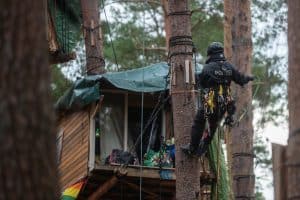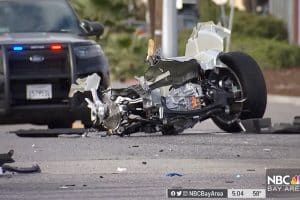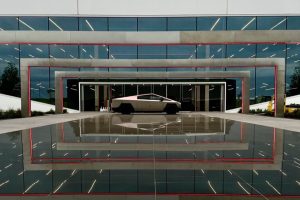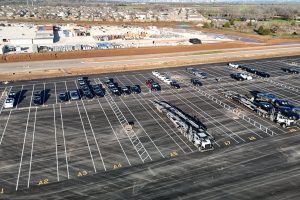Now we get to the really exciting part. Elon recently published some tweets that imply something I have been wondering about for a very long time and that bring us back to the question of the robot that builds the robot. Here are the tweets:
Real-world AI, physical world AI. What Elon means is the step where we go from object recognition to understanding the surrounding world. Ideally, we would like to place more robots in warehouses, factories, and many other places. Those examples are a very different real world than the streets a car drives upon. The same can be said about a hypothetical robot maid/butler at home or a robot chef in a kitchen. Those are all real-world AI issues and automating the learning process of AI is the only realistic solution if you want to go beyond basic functionality where a team needs to hand-hold the AI every step of the way towards basic functionality. In almost all of those applications, collecting a ton of data is exceedingly difficult because you don’t have millions of people volunteering to babysit an AI like they do with Tesla’s Autopilot.
If someone could fill an empty warehouse with robot chef arm prototypes and kitchens and have them all learn day and night automatically, continually improving and getting a sellable product in a couple of years, investors would throw so much money at them that the developers would drown in it. The less human input is required, the more scalable it becomes.
Everything Tesla has learned and developed for FSD could one day be used to train all kinds of real-world AI. It’s funny because some people are already a bit skeptical about whether FSD will ever work and whether a Tesla FSD Robotaxi future is already included in the current stock valuation. However, what if I told you that Tesla could be the key to the real-world AI problem? If Tesla continues to automate this process, then the real-world AI market might have to brace for a major disruption. As for the tweet above, it depends on how you interpret it. If our theory is correct, what Tesla could offer might be a lot more than just raw processing power. In some ways, this will work like Google Cloud’s AutoML (automatic machine learning), but instead of a small machine learning operation, which is good for learning something useful from a bunch of images, this instead will be a toolkit to train an AI for operation in the real world, whether that be a kitchen or a warehouse delivery system.
Its not the robot, its the AI
We have by now all seen the amazing things that the walking robots of Boston Dynamics are capable of doing, whether it be with four legs or two legs. In fact, SpaceX recently used one to inspect the Starship SN10 crash site. The advancement there is that Boston Dynamics managed to crack the problem of walking like animals, staying balanced, not falling over, and more recently, being able to understand where they can walk and how to overcome obstacles.
However, when it comes to actually understanding their surroundings and interacting with them, they are not all that smart and are in desperate need of training. They might also be lacking the onboard processing power needed, but mainly, the AI is the problem, as no AI has truly cracked the real-world AI problem, which in essence is a learning problem. Solving this in the case of robots can make unbelievable new things possible.
The robot that builds the robot
Tesla has been working for years on the machine that builds the machine, which in essence is a highly automated factory, but if we get to a point that a robot can build another robot, then exponential growth becomes possible. Unfortunately, direct robot multiplication in such a fashion is still a very long way off. However, if a group of robots can be programmed to build a factory on the moon or on an asteroid from local raw materials with minimal required input from Earth, a factory that can build more robots, suddenly massive Kardashev 1* scale projects become possible. In some ways, it’s like the von Neumann probe*, but now in the form of worker robots able to turn the raw materials of the solar system into whatever we need.
*Kardashev scale is a measure of how advanced a civilization is where right now we are type 0 and type 1 is technically capable of using and storing all of the energy available on its planet.
*Von Neumann probe — the idea of a self-replicating spacecraft that upon reaching a new solar system uses local raw materials to replicate and sends replicas to nearby stars to do the same. With conventional slow space travel, the probes could completely explore our galaxy in just half a million years. When applied to construction, self-replication or even regular replication enables exponential growth and unbelievable mega projects.
For years I have been wondering why Elon doesn’t have a company like Boston Dynamics that is focused on the issue of the robot that builds the robot. Again, though, assuming that he is working towards this, he may have foreseen the larger issue, which was not hardware but the AI that will power it, in which case he found the most profitable and realistic way to fund the development of the methodologies needed to crack real-world AI. Though, I really wonder how much of that was actually part of the plan when he decided to pursue Autopilot back in 2012/2013.
How real-world AI could fit into Elon’s grand plan
Elon Musk’s ambition, as he has stated a few times now, is to preserve the existence of consciousness. This can be broken down into just 3 different sub-goals and various technologies needed to achieve the goal. The easiest one to define is making life multiplanetary using SpaceX’s rapidly reusable rockets to build a civilization on Mars. The second is to preserve the earth and humanity on it. That would be done with Tesla’s help, which will help transition the world to renewable energy and make sure this world remains habitable. Then the last one has to do with AI taking over.
OpenAI was originally intended to prevent AI from extinguishing consciousness. Though, instead of being the savior we need, they themselves may have become the villain they were supposed to save us from, quite a lot of irony there. What is it that Elon keeps saying? Fate loves irony? The other side of that coin, founded at around the same time, is that Elon started Neuralink so that we can join AI if we can’t beat it, something for consciousness to at least remain relevant next to AI minds.
The Boring Company and Starlink can both be attributed to helping Tesla and SpaceX achieve their respective goals. Starlink by providing funding, and The Boring Company by helping avoid traffic on Earth and possibly by making places for us to live underground on Mars, because all the radiation makes the surface hazardous.
Nonetheless, if we can solve the issue of real-world AI, then we can make robots do a lot of the dirty work. Populating Mars without them would take a lot longer. Once again, robots and real-world AI can supercharge progress.





